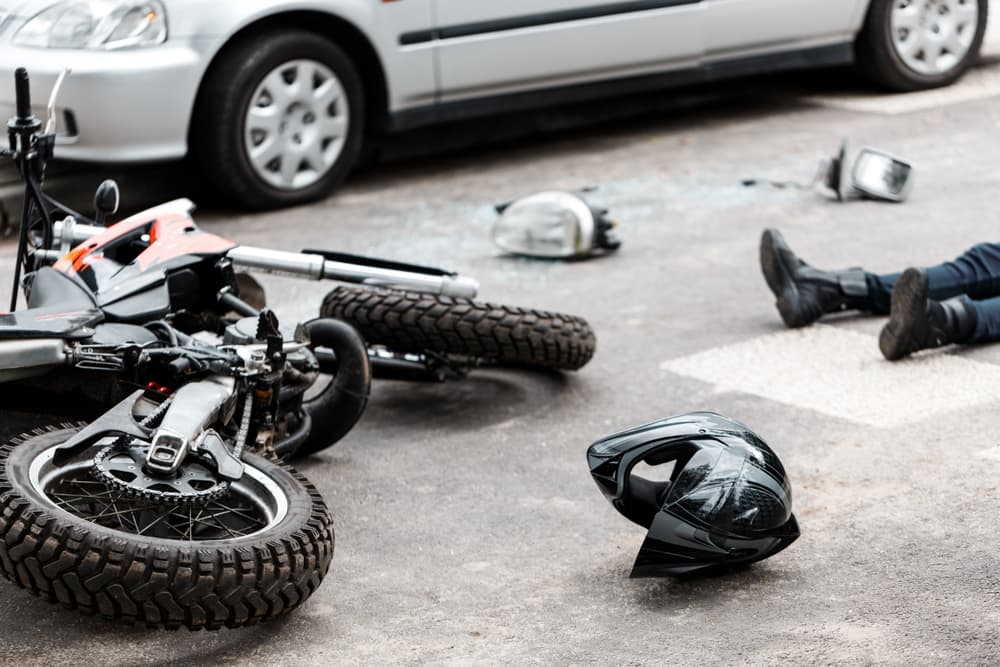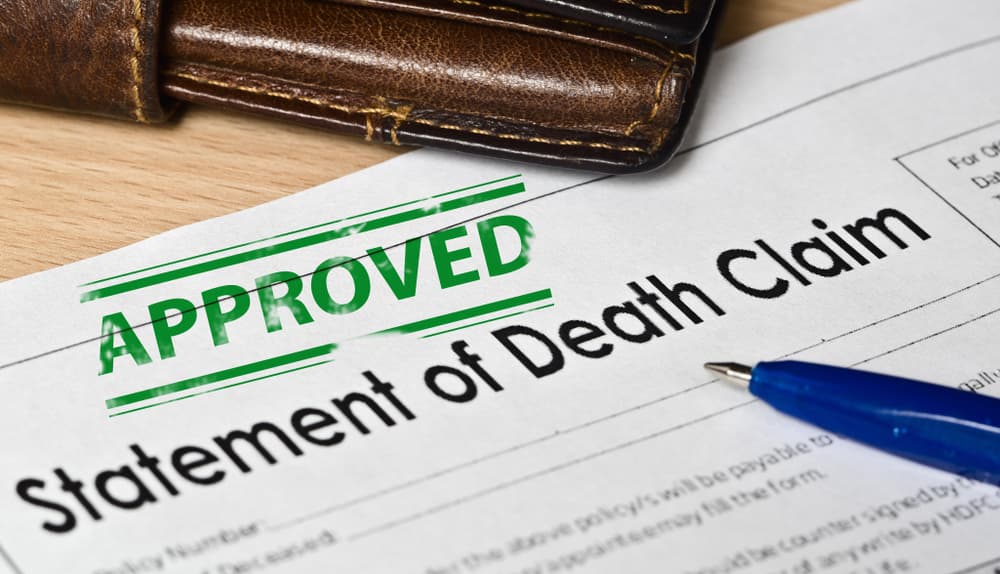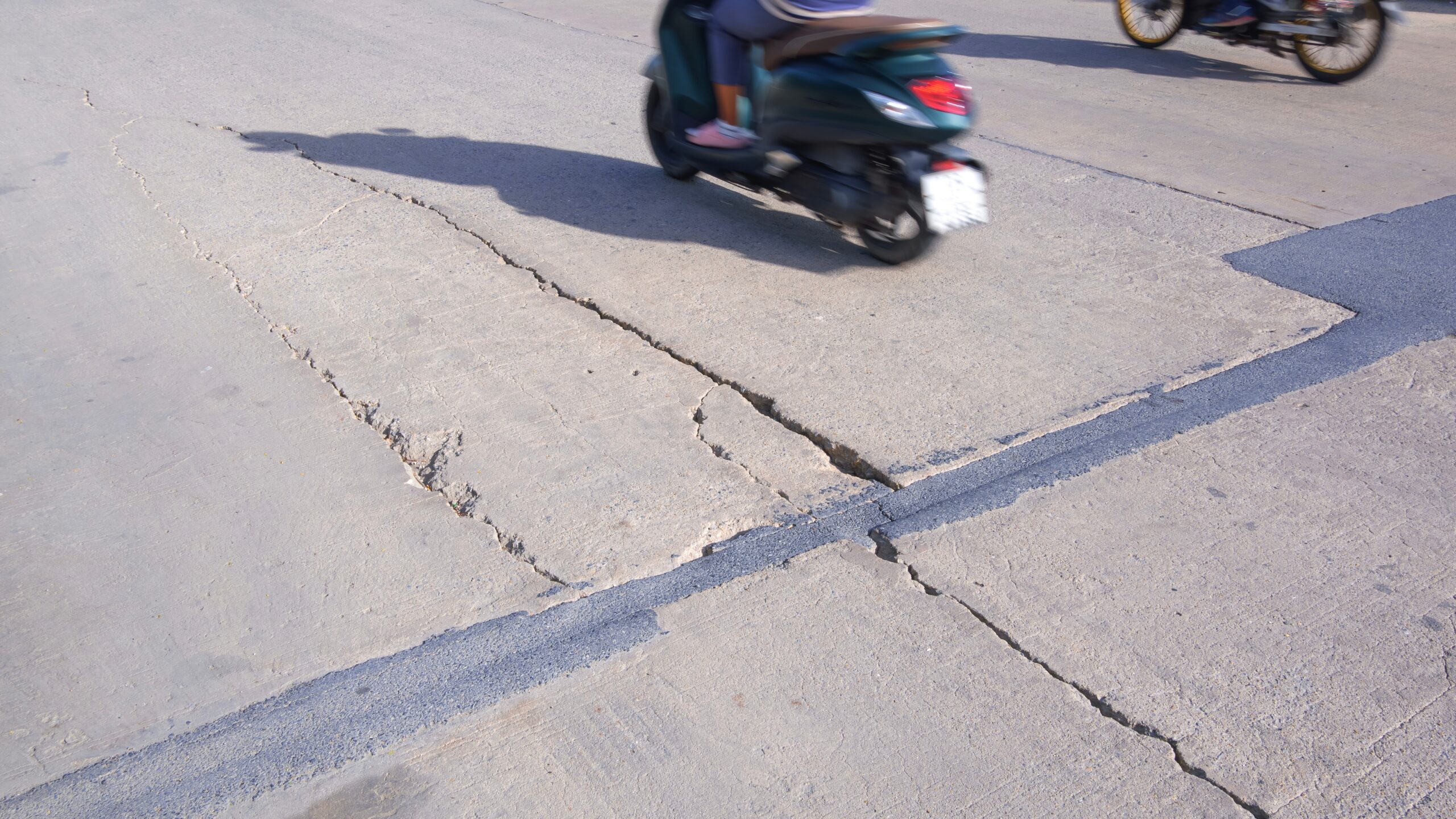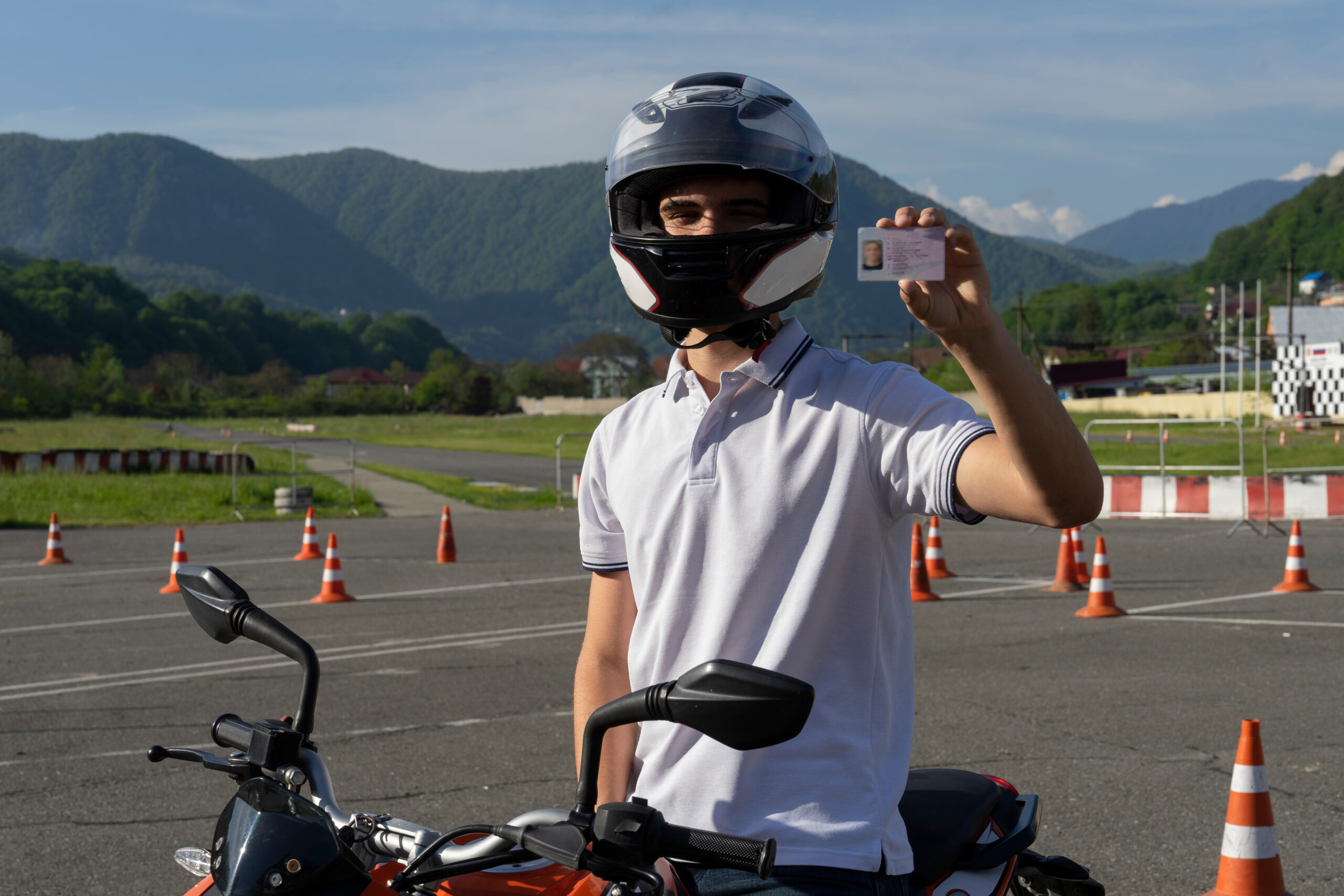Motorcyclists face the potential for debilitating and life-altering injuries every time they hit the road due to the limited protection available to riders and their passengers, reduced control and stability of the motorcycle, and the sheer size of the bike in comparison to other vehicles on the road.
While motorcycle accidents are not as common as car accidents, motorcycle riders and their passengers are estimated to be about 24 times more likely to die in a collision compared to passenger vehicle occupants. The potential for disabling injuries is also greater for those who are lucky to survive the motorcycle crash.
When a person dies in a motorcycle accident, the surviving family members may be shocked and traumatized. The deceased’s loved ones may be left financially and emotionally vulnerable and unsure of what to do next after the tragic event. If you lost a loved one in a motorcycle accident, you may be entitled to compensation through a wrongful death lawsuit and a survival action. While no amount of compensation will reverse your loss, this is no reason to turn down the money you deserve. A experienced wrongful death lawyer will help you for rightful compensation.
Risk Factors in Fatal Motorcycle Accidents

Certain risk factors apply exclusively to motorcycles on the road. Given that motorcycle accidents cause nearly 6,000 deaths annually, every motorcyclist and anyone who rides as a bike passenger should understand these risks:
- Limited protection. Motorcycles offer very little protection compared to cars. In a car, occupants enjoy protection from airbags, seatbelts, and the car's frame to help absorb the impact of a collision. Motorcycle riders, on the other hand, have only a helmet, leather gear, and perhaps some pads to protect them. This lack of protection means that even a seemingly minor accident can result in serious injury or death.
- Diminished control and stability. Motorcycles are less stable than cars, increasing the risk of accidents. Unlike cars with four wheels to provide stability, motorcycles have only two. This means riders are more vulnerable to losing control of their bike, especially when taking sharp turns or navigating uneven roads. This factor also makes motorcycle riders more likely to be affected by road hazards such as potholes, gravel, and debris on the road.
- Limited braking. Braking on a motorcycle can be tricky, especially during an emergency. Unlike cars with brakes on all four wheels, motorcycles only have two brakes, one on each wheel. This means that if riders need to brake suddenly, they may be unable to do so as efficiently or safely as they can in a car. Additionally, braking too hard on a motorcycle can cause the bike to skid, increasing the risk of a potentially deadly accident.
- Reduced visibility. Motorcycles are much smaller than cars and are more difficult to see on the road. This creates a dangerous situation for motorcycle riders, especially when other drivers are not paying close attention, are distracted, or do not check their side- and rear-view mirrors when changing lanes or turning. Motorcycle riders can also be harder to see at night or during bad weather, further increasing the risk of a fatal accident.
- Exposure to weather. In hot weather, riders can become dehydrated or suffer from heat exhaustion. In cold weather, riders can become hypothermic or have difficulty operating their motorcycle due to numb fingers or toes. Rain, snow, and ice can also create hazardous conditions for motorcycle riders and further reduce their visibility on the road.
In addition to these factors, motorcycles face the same risks as all other road users, such as encountering an intoxicated driver, dealing with road rage, drivers who run red lights or stop signs, and many more. When a collision occurs, motorcycle riders and their passengers face a greater possibility of life-threatening injuries occurring compared to passenger vehicle occupants.
Common Fatal Injuries in Motorcycle Crashes
While not every motorcycle accident has the potential to be fatal, many do. Because the body of the motorcyclist (or their passenger) is not protected by the metal shell of a car, seatbelts, and airbags, victims of motorcycle crashes are likely to suffer the following fatal injuries:
- Head injuries. Head trauma is by far the most common (and dangerous) type of injury in motorcycle accidents. Even if the rider is wearing a helmet, the impact of a crash can cause traumatic brain injuries that result in death. Despite this, wearing a helmet that meets safety standards is critical because protective headgear is estimated to be 37 percent effective in preventing fatal injuries in motorcycle crashes.
- Internal bleeding. Internal bleeding, which is likely to occur as a result of blunt force trauma in a crash, is a life-threatening injury because it may not manifest symptoms right away and is likely to go unnoticed for hours or even days. If left untreated, internal bleeding can lead to shock, organ failure, and eventual death.
- Severe blood loss. This can occur as a result of lacerations, puncture wounds, or loss of limbs that cause significant bleeding or hemorrhaging. In some cases, blood loss can be so severe that it leads to hypovolemic shock and, ultimately, death.
- Spinal cord injuries. A spinal cord injury can be devastating, leading to paralysis or even death. These injuries occur when the spinal cord is damaged or severed as a result of a crash or impact. Even if the motorcyclist survives the crash, they may be left disabled for the rest of their life.
- Neck injuries. Neck injuries can be life-threatening if the impact results in fractures. A neck injury can damage the spinal cord or the airway, leading to respiratory distress or paralysis.
- Severe burns. A motorcycle rider can suffer severe burns from exposure to hot surfaces, flames, or explosions in a motorcycle crash. Burns can be life-threatening and lead to complications like infection or shock.
- Heart attack. The stress and trauma of a crash can cause a heart attack, especially in those who are already at risk. In addition, broken ribs or a rupture of the sternum or several can also contribute to a cardiac contusion.
- Broken bones. A broken bone can lead to death if fragments of the bone puncture a vital organ after the force of impact in a motorcycle crash. For example, a fractured rib can pierce the heart or lungs, resulting in death.
The importance of wearing protective gear cannot be overestimated as all elements of a motorcyclist’s protective clothing serve their purpose: helmets protect the head, gloves protect the hands, boots protect the feet, while jackets and pants help reduce the risk of serious injuries in the arms, legs, and trunk.
How Can You Prove the Other Party’s Liability in a Fatal Motorcycle Accident?
If someone you love dies in a motorcycle accident and you want to pursue compensation, you will have to prove that the other party’s negligence caused the crash and resulted in your loved one’s death. Negligence means that a person acted in a way that was unreasonable under the circumstances. If you can hold the other party liable for their negligence if you can prove the following elements:
- Duty of care. Every road user is responsible for obeying traffic laws and operating their motor vehicle safely to avoid causing harm to others.
- Breach of duty. Once the duty of care is established, you must demonstrate evidence to prove that the other party breached the duty by failing to (a) obey traffic laws or (b) operate the motor vehicle safely.
- Causation. You must also prove that the other party’s breach led to your loved one’s death or fatal injury. For example, the other party hit your loved one’s motorcycle while attempting to perform an improper left turn, and this led to their death.
- Damages. Your loved one’s death must have resulted in economic and non-economic damages to satisfy the fourth element of proving negligence.
“Proving negligence” means collecting sufficient evidence to support all four elements of your claim. Seek the assistance of a wrongful death lawyer in proving negligence and liability.
Damages Available in a Motorcycle Wrongful Death Claim

The types of damages available to surviving family members in a wrongful death case fall into two categories:
Economic Damages
Economic damages have a specific dollar value and aim to compensate the deceased person’s surviving family members for the financial losses caused by their loved one’s passing. For example, some of the examples of economic damages available in wrongful death claims are:
- The financial support the deceased person would have provided had they lived
- The estimated value of benefits and gifts the family would have received from the deceased person
- Funeral and burial fees
- The cost of household services the deceased person would have performed
Many factors are considered when calculating the value of economic damages, including but not limited to the deceased’s age and health status before the death, earning capacity, and many others.
Non-Economic Damages
Courts recognize that wrongful death can result in significant emotional and psychological harm to the family, which is why this category of damages compensates surviving family members for intangible losses they have suffered, including:
- Loss of affection
- Loss of protection and emotional support
- Loss of guidance and training
- Loss of consortium
- Loss of society and companionship
Since it is difficult to determine a dollar amount for these losses, courts determine non-economic damages based on the evidence presented by the surviving family members in the case. Many factors go into determining adequate compensation for intangible losses, and wrongful death attorneys consider each case individually.
A Wrongful Death vs. Survival Action After Losing a Loved One
In some states like California, family members of a person killed in a motorcycle accident can pursue two kinds of legal actions:
- A wrongful death lawsuit provides economic and non-economic damages arising from the negligent or wrongful conduct of the defendant.
- A survival action pays for the costs, damages, and losses the deceased person suffers before their death. Common examples of such damages include medical expenses, the pain and suffering the deceased had endured before their passing, and damage to or loss of property, among others.
In other words, a survival action is essentially a personal injury claim that the deceased person would have pursued to obtain compensation from the liable party if they survived the motorcycle accident.
Who Can File a Wrongful Death Lawsuit After a Motorcycle Accident?
Not all family members are eligible to pursue compensation after their loved one’s death. In many states, the following parties might file a claim:
- Surviving spouse
- Domestic partner
- Children
- Other family members who should be entitled to the estate by intestate succession
There may also be others who can potentially file a wrongful death lawsuit after losing a loved one in a motorcycle accident. If the deceased person had appointed a personal representative of their estate before the death, that person can be eligible to bring a lawsuit on behalf of the estate, too. Essentially, the personal representative acts on the family's behalf and for the survivors' benefit.
How Long Does the Family Have to Bring a Wrongful Death Lawsuit & Survival Action After a Fatal Motorcycle Accident?
Each state has its own time limits for wrongful death cases and survival actions. In most states, the statute of limitations for wrongful death lawsuits is two years from the date of the death. When bringing a survival action, the time limit is often around six months after the death or two years from the date of fatal injury, whichever occurs later.
Two years might seem like a long time, especially after a loved one dies and surviving family members need to take the time to grieve and mourn their loss. However, time passes quickly and your wrongful death attorney cannot build a strong case overnight. That is why it is best to start working on your legal case sooner rather than later.
Discuss Your Loss with a Wrongful Death Attorney

Contact a San Mateo personal injury attorney to conduct the necessary pre-filing investigation and gather all the necessary documentation before evidence begins to degrade and the memories of eyewitnesses fade away and become unreliable.


